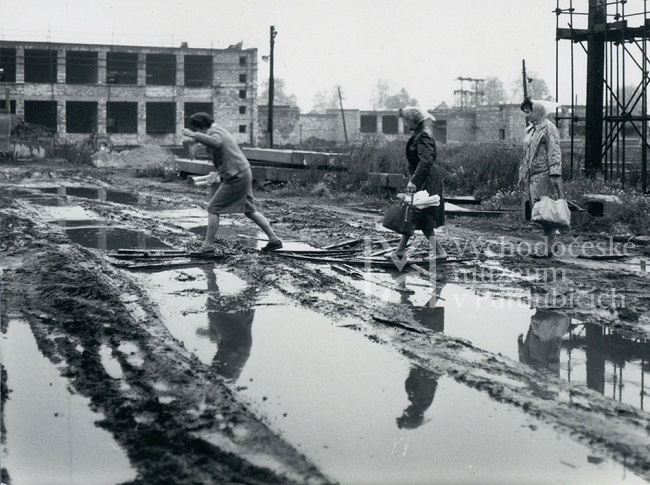
The East Bohemian Museum presents the Pardubice estates and how people lived there
 |
Pardubice - The East Bohemian Museum in Pardubice today opened a large exhibition dedicated to the housing estates of Pardubice. It summarizes the period from 1945 to 2000. Visitors will see architectural models, historical photographs, hear memories from witnesses, or take a look into a living room. Jan Ivanega, the exhibition's author and art historian, told ČTK.
"A third of the population of the Czech Republic lives in housing estates, so this topic concerns every third of us. In a broader sense, it concerns all of us, as housing estates shape the image of cities and landscapes. We live in a time of deep housing crisis. It is only a matter of time before society begins to address this issue, as not everyone is lucky enough to inherit housing or have the means for it," Ivanega said.
After World War II, the industrial city needed thousands of new apartments. Between 1945 and 2000, over 23,000 apartments were built there, providing homes for more than 53,000 people. The exhibition shows how people addressed housing in the past. "For housing to be of good quality, it should not be driven by profit maximization. The public should articulate its interest in building affordable housing. Without wanting to glorify the socialist era, we can draw inspiration from cooperative housing, which is cheaper than commercial residential construction," Ivanega stated.
The first housing estate built in Pardubice was Dukla, followed by Polabiny and others. "The Polabiny housing estate rightfully serves as an example of the best of the housing estate urbanism of the 1960s. The ideal of living in greenery was successfully realized there. Urban planners viewed the estate as a machine where people were not only supposed to live but also recreate, so they could be productive at work," said the curator.
A properly functioning housing estate offers the necessary infrastructure. During the socialist era, kindergartens, schools, and shops were never successfully built concurrently with the apartment buildings. "There was absolutely regular delay. This is a lesson for the present, to encourage developers to build apartment buildings with accompanying infrastructure," Ivanega noted.
The exhibition will also present unfinished projects. One of the period models shows the Karlovina housing estate, which was intended to be much larger. "There were plans for multi-story garages or a large service facility. It was an effort to transform the entire city center; for socialist planners, it stopped being possible at some point to build housing estates on green fields outside the city because in the mid-1960s, the state began to place greater emphasis on the protection of agricultural land," Ivanega stated.
The exhibition will also explore art in public spaces and give people a glimpse into the private lives of households, showcasing period interiors of living rooms with large living wall units or other parts of the apartment. A focal point of the exhibition is also the memories of housing estate residents, who will talk about how they acquired furniture, stood in lines for scarce goods, and how children played on standardized playgrounds or ice rinks. The exhibition will be on view at the museum until January 3, 2027. It will be accompanied by guided tours of the exhibition and walks around the city.
The English translation is powered by AI tool. Switch to Czech to view the original text source.
0 comments
add comment










